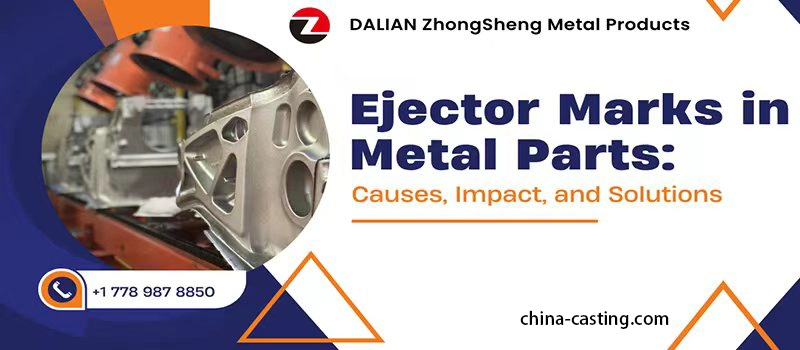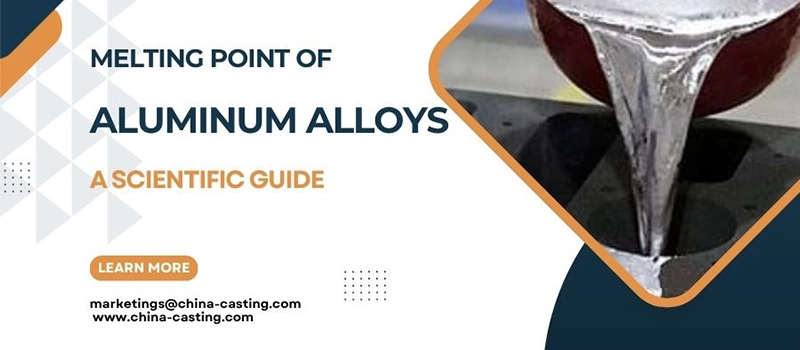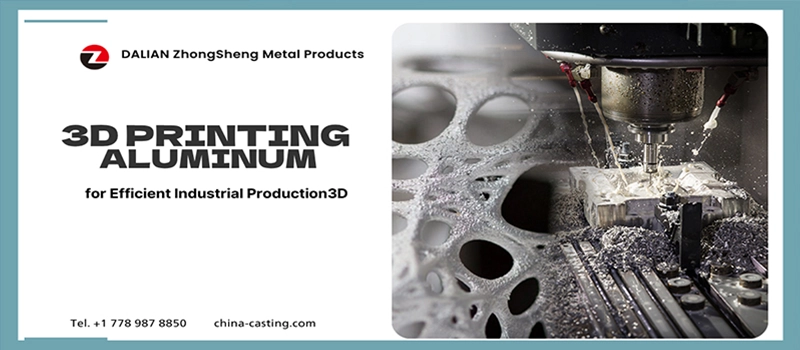Are you struggling to produce high-precision metal components with complex geometries? Do conventional casting methods leave behind too many defects, inconsistent surface finishes, or costly machining requirements? Are you unsure which casting method offers both quality and cost-efficiency for your industrial applications?
You’re not alone. Many engineers and procurement managers face the same challenge when dealing with intricate part designs, tight tolerances, and demanding material specs. Sand casting may be affordable but lacks precision. Die casting may offer speed but falls short on material flexibility. And machining everything from solid billet? It’s expensive and wasteful.
This is exactly where lost wax casting shines.
Also known as lost-wax casting, investment casting, or precision casting, this time-tested technique is ideal for producing complex, high-performance metal parts with minimal post-processing. Whether you’re working with bronze, aluminum, or stainless steel, the lost wax casting process allows you to replicate intricate designs with high accuracy, tight tolerances, and outstanding surface quality — all while optimizing your total cost.
🔧 Why Lost Wax Casting Matters: Principle and Significance
🧩 Understanding the Principle of Lost Wax Casting
The lost wax casting technique, sometimes called investment casting or precision casting, operates on a simple yet powerful principle: a temporary wax pattern is used to define the shape of a final metal part. Once that pattern is encased in a refractory mold and later melted away, what remains is an exact negative impression of the desired component.
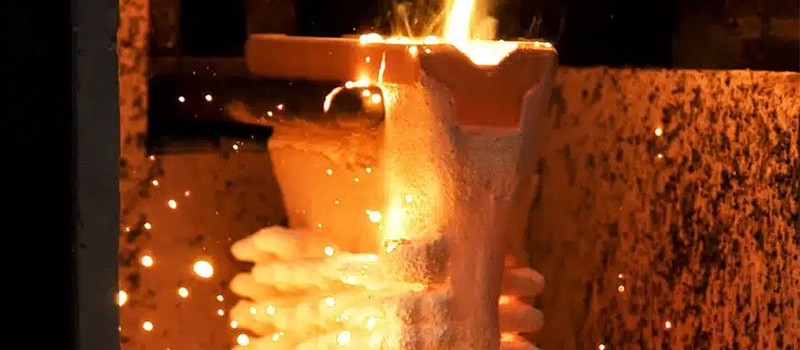
This is what gives lost wax casting its defining characteristic — the wax is lost in the process, but its precision is transferred to metal.
Unlike mechanical machining or reusable die methods, this technique reproduces complex geometries without compromise. Every feature — from fine lettering to internal cavities — can be faithfully recreated. It’s a one-to-one transformation from wax design to metal reality, which is why the process is widely used for high-tolerance, intricate, and structurally demanding components.
⚙️ The Engineering Logic Behind the Lost-Wax Method
In engineering terms, lost wax casting is an application of sacrificial pattern manufacturing. The key lies in controlling the dimensional stability of the wax model and the thermal behavior of the mold during metal filling.
The wax pattern must expand and contract predictably so the final metal casting matches the intended dimensions. Engineers compensate for this by adjusting wax injection pressure, die temperature, and metal shrinkage coefficients. The result is a casting process that delivers dimensional accuracy within ±0.05 mm, far exceeding the capabilities of most traditional casting approaches.
The lost wax casting meaning therefore extends beyond its literal definition — it represents a controlled system where every variable, from wax density to mold permeability, is optimized for precision.
🔬 Why the Lost-Wax Process Is Suitably Named
A frequent question in foundry training is:
“Why is the lost-wax process of casting suitably named?”
The answer lies in its essential design philosophy. The wax is intentionally eliminated — it is sacrificed to form the perfect cavity for molten metal. This sacrificial step ensures that every casting is unique, with no need for reusable molds or complex parting lines.
By removing the wax completely, manufacturers eliminate mismatch seams and geometric distortion. The lost wax casting method thus achieves not just visual fidelity, but mechanical precision and uniform material density — qualities essential for components that operate under load, heat, or pressure.
🌍 The Industrial Significance of Lost Wax Casting
The significance of lost wax casting in modern metal manufacturing is profound. It bridges design freedom and engineering performance, allowing complex parts to be made with minimal machining, reduced waste, and consistent repeatability.
This technique is indispensable for industries that require lightweight structures, tight tolerances, or excellent surface finishes. From pump impellers and turbine vanes to bronze fittings and aluminum housings, lost wax castings provide both strength and geometry control.
It’s a process that embodies both craftsmanship and science — a method where ancient foundry wisdom meets modern precision engineering.
⚙️ Lost Wax Casting Process: Step-by-Step Breakdown
🧱 Step 1: Wax Pattern Creation
The process begins with the production of a precise wax replica of the final component. This wax model is the foundation of the lost wax casting process, and its accuracy directly affects the final part’s dimensions.
🔹 Two Methods for Wax Pattern Creation:
- Injection Molding – Most common for mass production. A metal die is used to inject molten wax under controlled pressure, producing uniform and repeatable patterns.
- Manual Wax Modeling – Used for prototypes, low-volume runs, or artistic applications such as lost wax bronze casting for sculpture and ornaments.
To compensate for shrinkage, engineers must consider wax expansion coefficients and apply dimensional offsets during the die design stage. The wax itself must have low residual stress, excellent flow properties, and surface smoothness to ensure clean ceramic shell formation in the next steps.
🌲 Step 2: Pattern Assembly (Wax Treeing)
Once individual wax patterns are produced, they are assembled onto a central wax sprue, creating what is known as a wax tree. This assembly allows multiple castings to be poured in one cycle, improving efficiency and reducing per-part cost.
The sprue system includes:
- Central Runner: Where metal will flow in
- Branch Connections: Carrying metal to each pattern
- Gating & Riser Design: Essential for balanced metal flow and defect control
A properly designed wax tree ensures uniform filling, minimal turbulence, and better metal yield. The entire structure is prepared for the next phase — shell building.
🧪 Step 3: Ceramic Shell Building
The assembled wax tree is repeatedly dipped into a ceramic slurry (typically made from colloidal silica and refractory flour such as zircon or alumina), then coated with stucco sand. This step is repeated 5–9 times, depending on:
- Part size
- Wall thickness
- Desired mold strength
Each coat must dry completely before the next is applied. This slow, multi-day process builds a rigid ceramic mold that can withstand the thermal and mechanical stress of metal pouring.
Key parameters include:
- Drying time and humidity control
- Slurry viscosity
- Refractory grain size
The final shell must offer thermal shock resistance, dimensional stability, and low gas permeability to maintain casting quality.
🔥 Step 4: Wax Removal (Dewaxing)
Once the ceramic shell is fully cured, the wax is removed — this is the key moment where the term “lost wax” becomes literal.
🔹 Two Common Dewaxing Methods:
- Autoclaving: High-pressure steam melts and drains the wax, minimizing shell cracking
- Flash Fire Furnace: Rapid heating burns out the wax instantly
The goal is to eliminate all wax residues while preserving the structural integrity of the shell. Even minor wax residue can lead to gas porosity, inclusions, or contamination of the molten metal.
🔩 Step 5: Metal Pouring
The empty ceramic mold is now preheated to a specific temperature (usually 900–1100°C depending on alloy) to prevent thermal shock and premature solidification.
Molten metal is then poured into the mold through the central sprue. Common metals include:
- Aluminum for lightweight mechanical parts
- Bronze for wear-resistant, corrosion-resistant components
- Stainless steel and high-alloy steels for load-bearing or high-temperature parts
For critical components, vacuum or inert atmosphere pouring is used to prevent oxidation and improve fill quality. Lost wax casting aluminum parts are typically gravity poured, while lost wax bronze casting process components may use tilt or centrifugal pouring for better flow in fine cavities.
❄️ Step 6: Cooling and Shell Removal
Once the metal has solidified, the ceramic shell is mechanically or chemically broken away. This is done through:
- Vibrating media
- High-pressure water blasting
- Acid leaching (for fine features)
The cooled lost wax cast components are now separated from the tree.
🛠️ Step 7: Cut-Off, Finishing, and Inspection
Each casting is:
- Cut off from the runner system
- Deburred and ground
- Surface treated if necessary (sandblasting, shot peening, pickling)
- Heat treated for mechanical properties (e.g., annealing, quenching)
- CNC machined for critical surfaces or threaded areas
Final quality control includes:
- Dimensional inspection using CMM
- Material verification via spectrometry
- Non-destructive testing (ultrasonic, dye penetrant, X-ray) if required
At this stage, the lost wax casting services provider ensures full compliance with technical drawings, tolerances, and material standards.
🔩 Choosing the Right Metal for Lost Wax Casting
One of the key advantages of the lost wax casting method is its versatility in materials. Unlike die casting, which is limited to low-melting-point metals, or sand casting, which struggles with fine features, lost wax casting materials can range from lightweight aluminum to high-strength stainless steel to artistic bronze alloys.
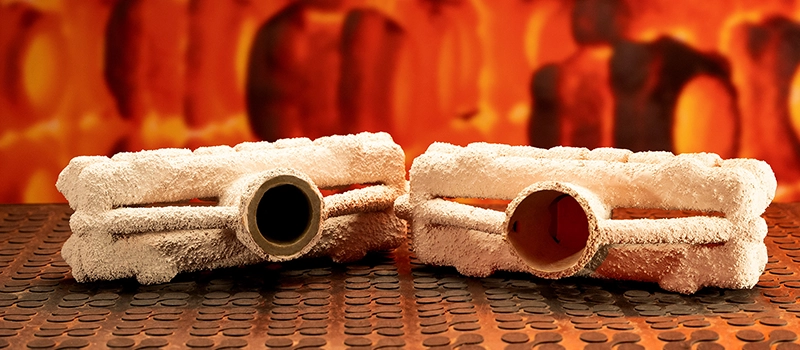
Selecting the correct alloy depends on factors such as:
- Load-bearing requirements
- Operating temperature
- Corrosion resistance
- Wear resistance
- Weight constraints
- Surface finish expectations
Let’s break down the most commonly used materials in lost wax castings:
🪶 Aluminum Alloys
Used in: Automotive, aerospace, robotics, electronics
Lost wax aluminum casting is popular for applications where weight reduction is critical. Aluminum is:
- Lightweight
- Highly machinable
- Corrosion-resistant
- Excellent at heat dissipation
Common aluminum grades used:
- A356 – Excellent fluidity and weldability
- 6061 – Great strength-to-weight ratio
- ADC12 / A380 – Often used for housings, enclosures, and brackets
However, aluminum requires precise temperature control during casting (typically 660–750°C), and preheating of the mold is critical to avoid misruns or shrinkage cavities.
🛡️ Stainless Steels
Used in: Medical, petrochemical, food processing, defense
Stainless steel is one of the most demanded lost wax casting materials due to its:
- Excellent corrosion resistance
- High tensile and yield strength
- Temperature resilience
Common stainless grades include:
- 304 – General-purpose; cost-effective
- 316 – Marine-grade; resistant to salt and acids
- 17-4PH – Precipitation hardened; ideal for high-stress components
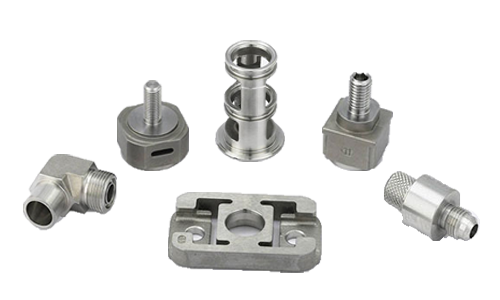
Get a quote now!
These alloys are often selected when post-processing like polishing or electropolishing is required. In many industrial parts, stainless lost wax castings reduce the need for protective coatings.
⚙️ Carbon and Alloy Steels
Used in: Mining, agriculture, construction equipment
Where strength and cost matter more than corrosion resistance, carbon steel and low-alloy steels are excellent candidates. They offer:
- High structural integrity
- Wide range of heat treatability
- Affordable price point
Examples:
- WCB, LCB – Standard for pump bodies and valves
- SC45, 42CrMo4 – For gears, flanges, and couplings
- 4140 / 4340 – High-strength, high-fatigue parts
These are also ideal for machining after casting, especially when tolerances or surface finishes must be improved.
🟠 Bronze and Copper Alloys
Used in: Marine, artistic, antique restoration, architecture
Bronze casting (lost wax) is one of the oldest known applications of this process — and still relevant today. The reason? Bronze offers:
- Excellent wear resistance
- Low friction coefficient
- Rich coloration and visual appeal
Typical alloys:
- Phosphor bronze (C51000) – Used in springs, bearings
- Silicon bronze (C87500) – Common for architectural components
- Red brass – Good for valves, nozzles, and decorative fixtures
The lost wax bronze casting process supports both functional and ornamental parts, blending precision with aesthetics. It’s the preferred method in sculpture and art foundries for its fidelity and surface quality.
🌡️ High-Nickel and Exotic Alloys
Used in: Aerospace, power generation, chemical reactors
Some lost wax casting manufacturers specialize in superalloys for extreme environments. These include:
- Inconel 625 / 718 – High-temp oxidation resistance
- Hastelloy C-276 – Acid-resistant
- Cobalt-Chrome (CoCr) – Often used in medical implants and turbines
These materials demand advanced shell systems and controlled atmospheres to prevent oxidation or contamination during casting.
Lost Wax Casting vs. Other Casting Methods
When choosing a casting process, it’s critical to understand how each method performs in terms of accuracy, complexity, cost, and material compatibility. Here’s a detailed comparison of lost wax casting, sand casting, and die casting:
🧾 Casting Method Comparison Table
| Feature | Lost Wax Casting | Sand Casting | Die Casting |
|---|---|---|---|
| Casting Precision | High – tolerances up to ±0.05 mm | Low – typically ±0.25 mm | Moderate – ±0.10 mm |
| Surface Finish | Excellent (Ra 1.6–6.3 µm) – smooth & detailed | Rough (Ra 12.5–25 µm) – requires machining | Good (Ra 3.2–12.5 µm) – may need polishing |
| Complex Geometry Handling | Very High – supports thin walls, undercuts, internal features | Limited – simple shapes, poor for internal complexity | Moderate – limited undercuts, requires draft angles |
| Tooling Cost | Medium – requires metal dies for wax injection | Low – uses wooden or aluminum patterns | High – precision steel molds required |
| Mold Reusability | Non-reusable (one-time use ceramic mold) | Semi-reusable (patterns can be reused) | Reusable (molds last thousands of cycles) |
| Production Volume Suitability | Low to Medium volumes | Medium to High volumes | High volumes (economical only in mass production) |
| Material Range | Wide – aluminum, bronze, stainless steel, tool steels, exotic alloys | Wide – cast irons, steels, aluminum | Narrow – mainly zinc, aluminum, magnesium |
| Initial Lead Time | Moderate – due to shell building and dewaxing steps | Short – simple mold preparation | Long – requires mold machining and setup |
| Typical Applications | Precision parts, aerospace, valves, pumps, medical, automotive | Engine blocks, housings, heavy components | Consumer goods, electronics, automotive casings |
| Environmental Impact | Medium – ceramic waste but less machining required | High – sand disposal and machining waste | High – energy use and scrap material |
| Customization & Flexibility | High – every mold is custom | Medium – pattern reuse may limit changes | Low – changes require mold rework or rebuild |
💸 Key Cost Drivers in Lost Wax Casting
The total cost of a lost wax cast part is influenced by a combination of material, design complexity, tooling, batch volume, and post-processing. Here’s how it breaks down:
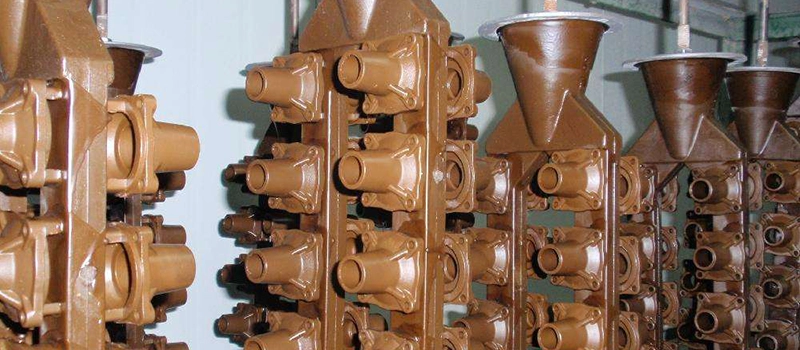
🧰 1. Tooling Cost (Wax Injection Die)
- The wax pattern is usually made using an aluminum or steel injection mold.
- For high-volume orders, the tooling cost is amortized across thousands of pieces — per-part cost drops significantly.
- For small batch or prototyping, manual wax modeling is used, which reduces tooling cost but increases labor.
🧮 Example: A typical injection mold for a medium-sized part might cost $2,000–$8,000, depending on complexity.
📐 2. Part Complexity
The more complex the geometry, the more it affects:
- Shell building time (more coats needed)
- Wax tree layout (more sprue branches)
- Mold break-out and finishing (more manual labor)
Parts with thin walls, intricate details, or internal cavities require more careful casting and cleaning — adding time and labor.
📦 3. Order Volume
Lost wax casting suppliers often offer price tiers based on volume:
- Low volume (10–100 pcs): higher cost per unit
- Mid volume (100–1,000 pcs): cost-efficient sweet spot
- High volume (1,000+ pcs): economy of scale kicks in
Volume also affects the unit allocation of fixed costs like tooling and mold setup.
🔩 4. Material Selection
Material cost varies significantly:
- Aluminum and carbon steel are relatively affordable
- Stainless steel and bronze are mid-range
- Nickel-based alloys and cobalt-chrome are high-cost
Some alloys also require controlled atmosphere melting, which adds further operational cost.
🛠️ 5. Post-Casting Operations
After the initial casting, additional work may include:
- Cut-off and grinding
- Heat treatment (normalizing, annealing, quenching)
- Surface treatment (blasting, passivation, polishing)
- Precision CNC machining (for tight-tolerance fits or thread features)
- Inspection and testing (CMM, X-ray, dye-penetrant)
Each step adds cost but may be essential depending on the end-use specification.
Need Help? We’re Here for You!
🚢 6. Logistics and Packaging
For international buyers, freight costs, customs duties, and certified packaging (e.g., for Europe or North America) must be considered.
Lost wax casting manufacturers often offer:
- FOB or CIF pricing
- Wooden crate or vacuum packaging for corrosion-sensitive parts
- Consolidated shipping options for bulk orders
🤝 How to Optimize Cost Without Sacrificing Quality
Working with a professional lost wax casting service helps reduce cost by:
- Recommending the right material for your function (not over-specifying)
- Optimizing part design for casting (Design for Manufacturability, DFM)
- Consolidating assemblies into single castings
- Reducing machining time with as-cast precision features
The goal isn’t just to lower the unit cost — it’s to lower total system cost by reducing waste, rework, and part failure.
✅ Conclusion
Lost wax casting offers unmatched precision, design flexibility, and material versatility. For complex parts that demand accuracy and consistency, it remains one of the most valuable metal casting methods in modern manufacturing.


